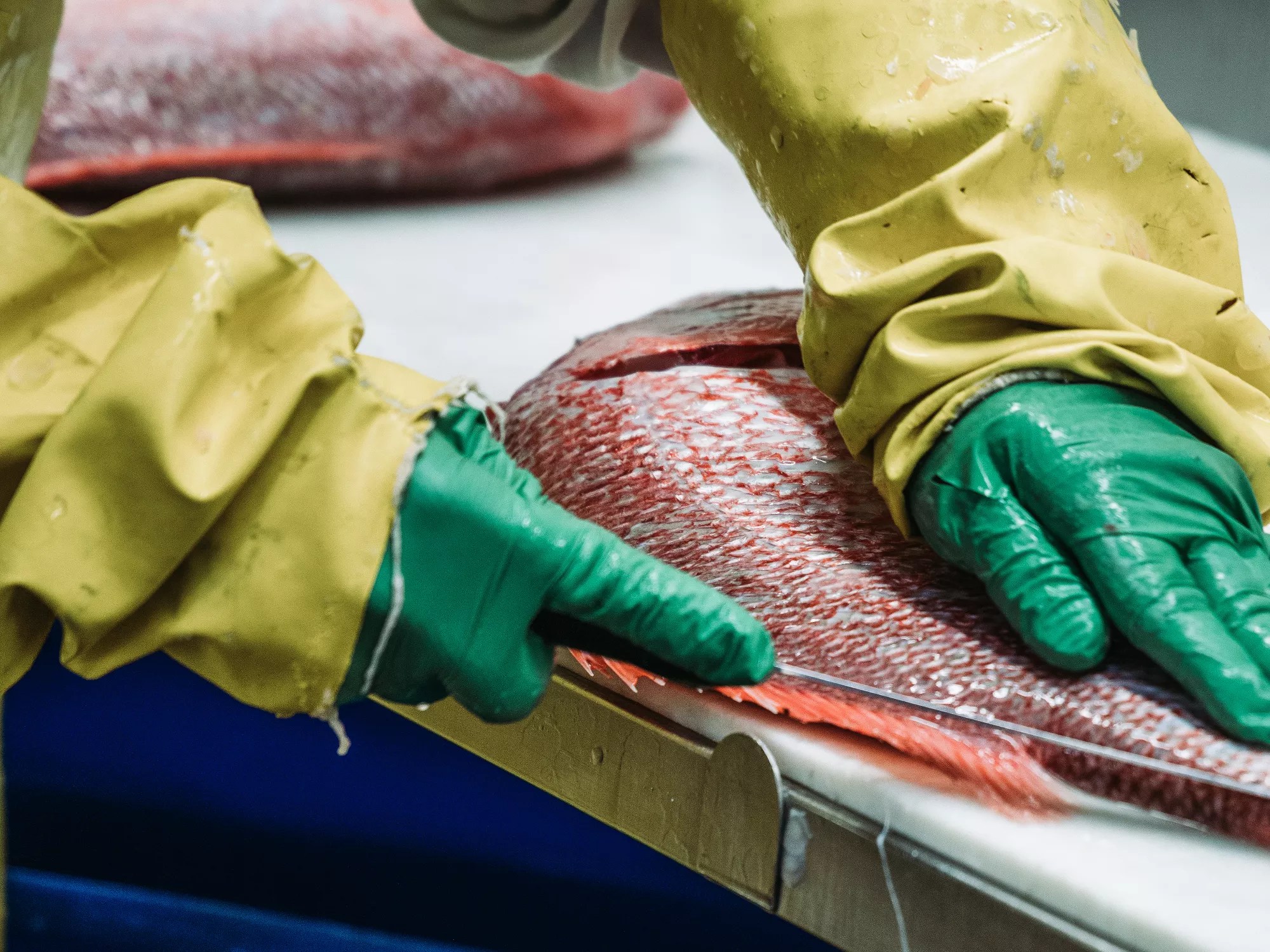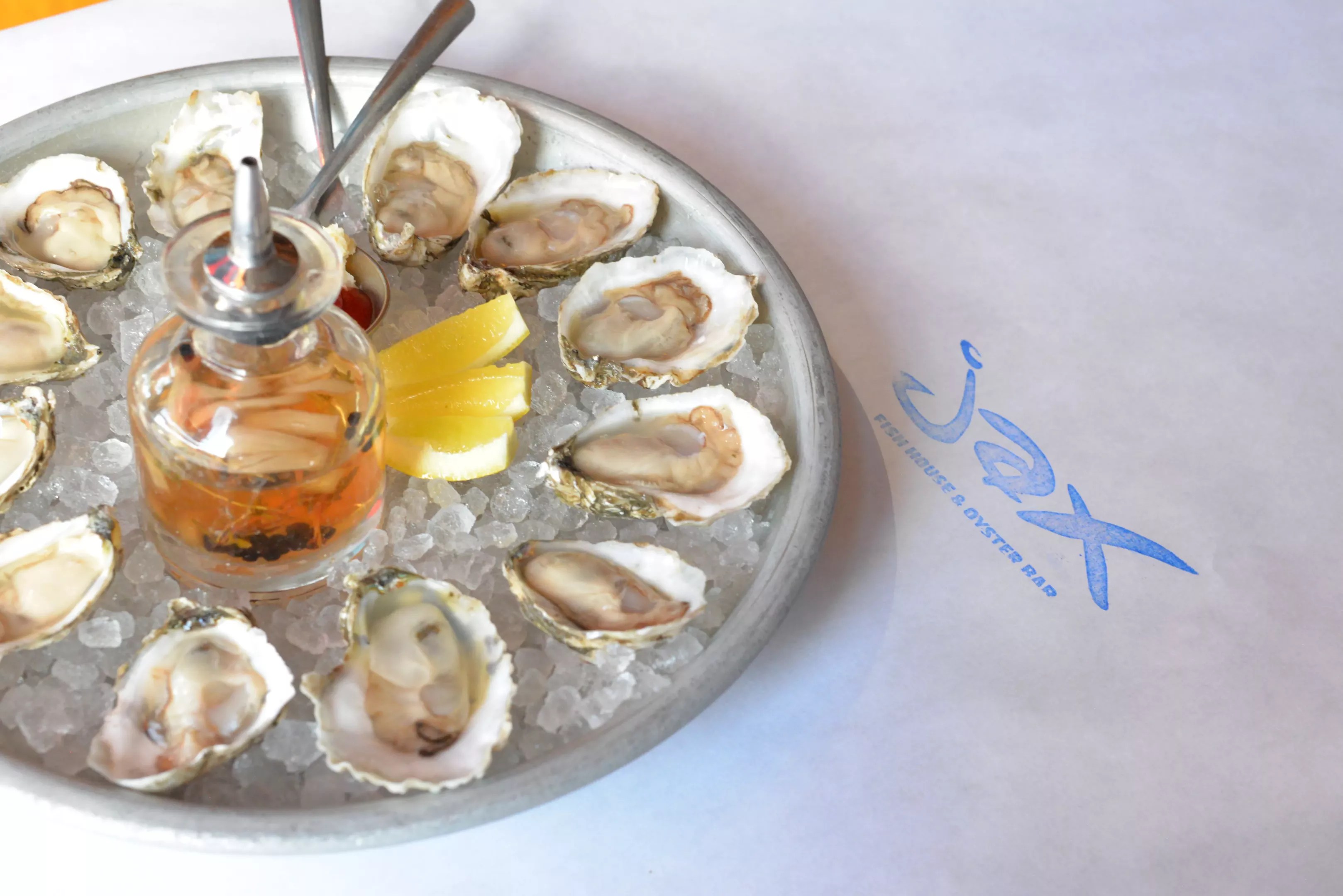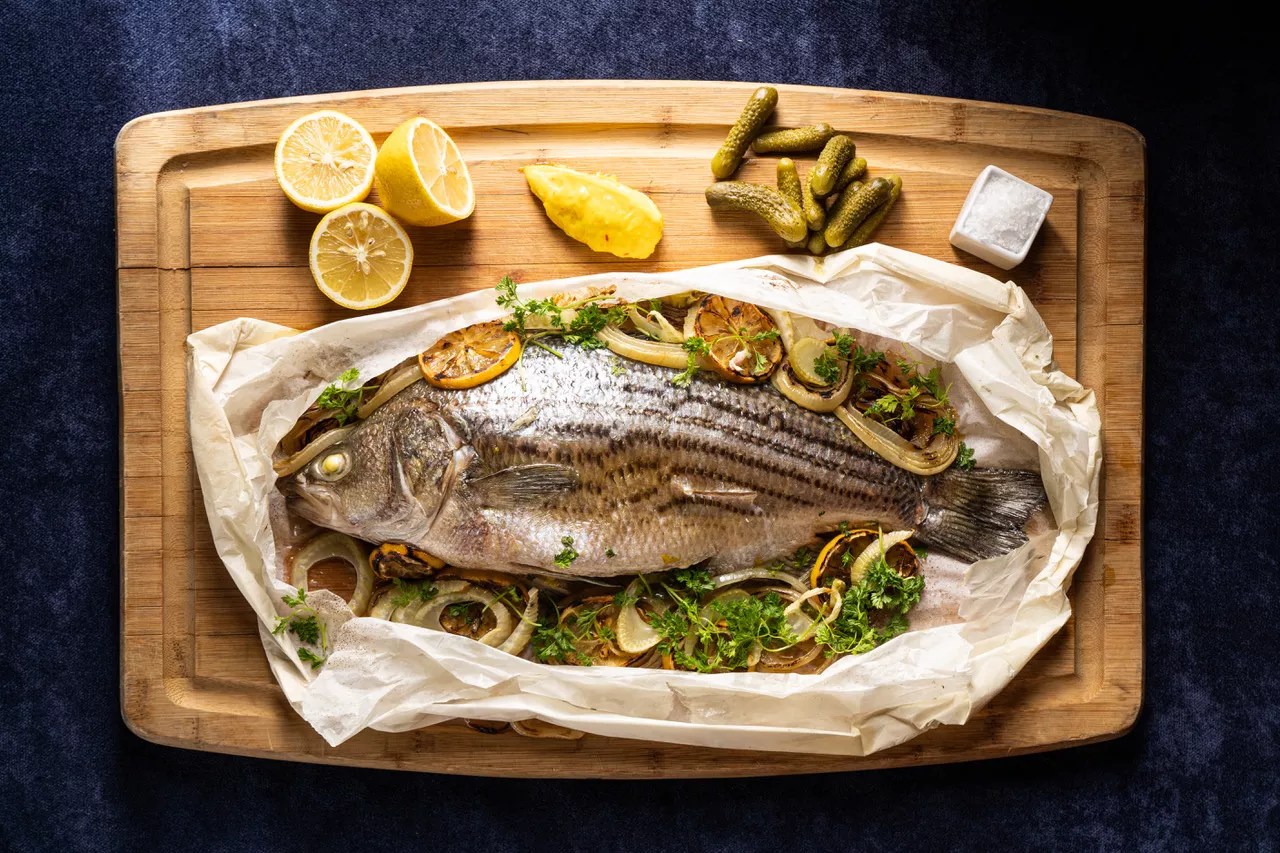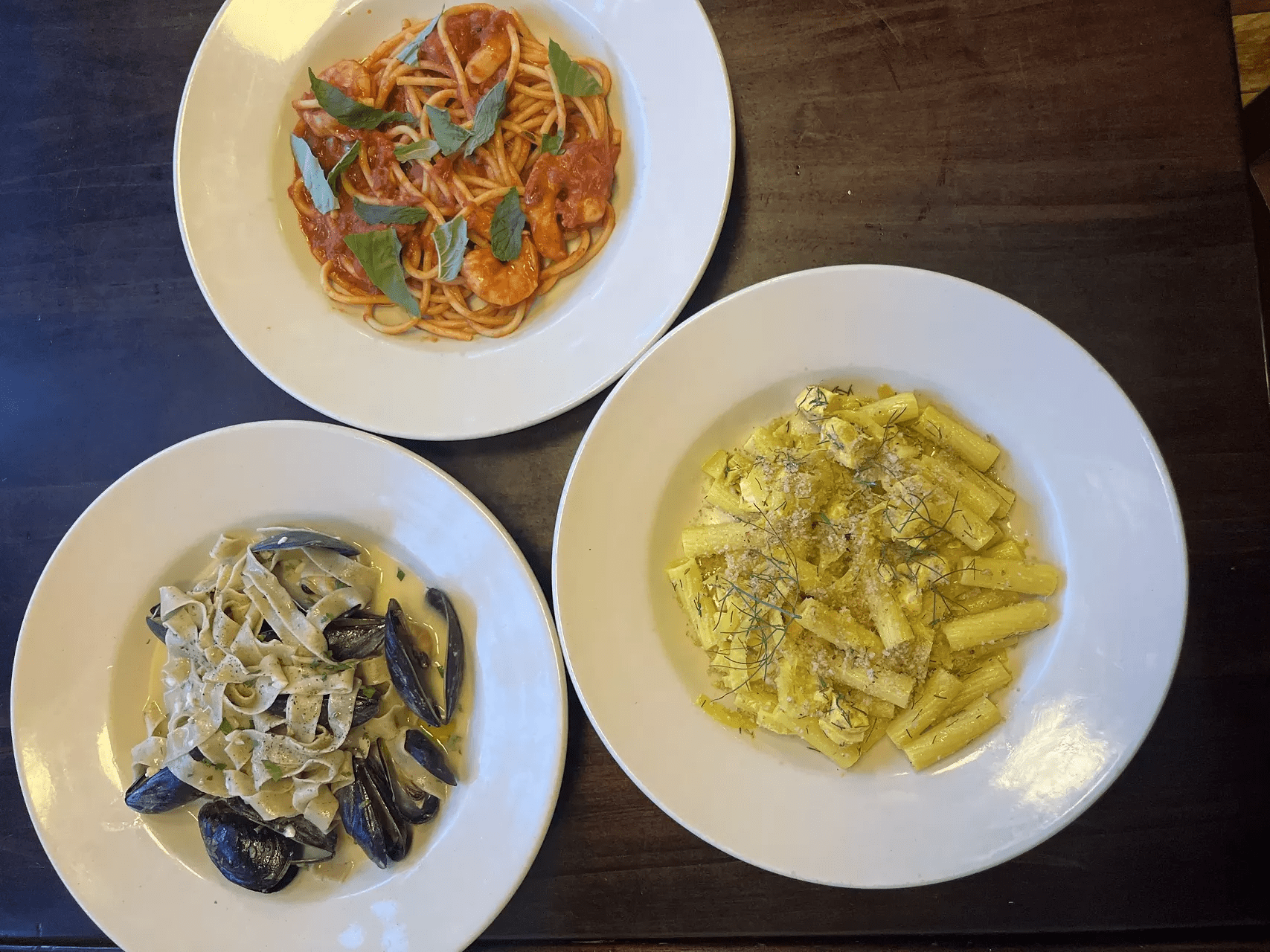
Seattle Fish Company

Audio By Carbonatix
The Italian Christmas Eve tradition Feast of the Seven Fishes originated from two converging realities – the Catholic practice of abstaining from meat on holy days, and an abundance of seafood available from the Mediterranean Sea.
The reality in Denver, however, is that the nearest ocean lies over 1,200 miles away. But that hasn’t stopped restaurants like Coperta from hosting their own Feast of the Seven Fishes dinners. This year, the Uptown spot at 400 East 20th Avenue is celebrating the tradition for the eighth time, with a special menu available December 22-24 that includes such non-Colorado items as hamachi, swordfish, bay scallops and salt cod.
Coperta is just one of a growing number of Denver-area restaurants pushing back against the notion that the seafood available in landlocked Colorado is of lesser quality than that of restaurants and stores closer to the coasts.
Boulder’s Jax Fish House and Oyster Bar, for instance, focuses almost exclusively on seafood every day of the year, and it just celebrated its thirtieth anniversary – a far longer tenure than many seafood restaurants located directly on a beach.
“If you’re sitting in a seafood restaurant in New York City, they have Washington state oysters, swordfish from Hawaii, tuna from Mexico and grouper from Florida,” notes Jax founder Dave Query. “But eat an oyster in Colorado, and all of a sudden it’s like the weirdest thing that’s ever happened.”

The oysters at Jax arrive directly from the coast.
Courtesy of Jax Fish House
The reality is that Denver diners have access to seafood that’s just as fresh – and in some cases even fresher – than restaurants on the shore with an ocean view. That’s because dramatic advances in transportation, technology and communications have nearly eliminated any barrier between the food we eat and where it comes from.
Local specialties aside, most of the seafood eaten nationwide is likely flown there from somewhere else. If the common denominator of fresh seafood is its ability to reach your plate by plane, Denver has an advantage on par with any nearby ocean: Denver International Airport.
“If you think of airplanes as fishing boats and airports as harbors, we’ve got the third-busiest harbor in the world at DIA,” Query says.
It’s a refrain repeated by just about any local chef you speak to. Tim Kuklinski recently stepped in as managing partner of Bistro Vendôme and became well-versed in sourcing seafood in Denver in his former role as culinary director for the entire Crafted Concepts restaurant group, including the seafood-centric Stoic & Genuine (which recently closed as the group reorganized for its next era). He notes that DIA is often the first stop for deliveries from both coasts and the Gulf of Mexico, not to mention international imports. This gives Denver first access to fresh-caught fish.
“Everything, everything has to come through here,” Kuklinski says. “DIA is a huge hub, and there are flights in and out of there every day. I think there are some things you can get out here that are sometimes fresher than in other parts of the country.”

Bistro Vendôme’s whole striped bass en papillote.
Joni Schrantz
The value of such a geographic hub is amplified now that airplanes have replaced trucks as the primary mode of seafood transportation in the decades since DIA opened. Temperature-controlled containers are manufactured to fit the curve of airplane hulls. The freezing and packaging process is more sophisticated. Computer systems track inventory availability and create a market for buyers and sellers.
It’s a far cry from the early days of seafood distribution in Colorado. Denver-based Seattle Fish Co. began importing seafood from Seattle (hence the name) back in 1918. Back then, the company started transporting oysters via trains, on ice, covered in hay. According to Scott Richardson, a sales representative with Seattle Fish for 32 years, the company currently brings about a million pounds of seafood into Colorado every month and services roughly 75 percent of the city’s restaurants.
“When I first started, we were selling maybe 60 percent frozen, 40 percent fresh,” Richardson notes. “Now it’s like 85 percent fresh, 15 percent frozen. … Every day, we have over 100 SKUs of fresh items.”
As these supply-related advances improved the quality, freshness and variety of the seafood brought into Colorado, demand began to increase as well. It all started with the chefs, who started taking more risks and demanding better-quality ingredients.
“Twenty-five years ago, Denver kind of had the stigma of being a meat-and-potatoes town,” Kuklinski says. “But over the past 25 years, we’ve had lots of restaurants being successful serving things outside of meat and potatoes. Michelin Guides. James Beard Award winners. There’s national attention here, and the demand is increasing. It just kind of made sense for that market to expand.”
The shift in Denver’s dining scene began in the early 2000s, just five or so years after DIA opened. More people were flying in to visit the mountains. More people were moving to the city. That attracted new, young chefs interested in doing something different. And the availability of fresher fish was part of that change.
“Back in the day, much of the fish that came in was pre-processed because chefs weren’t willing to do the work to do it themselves,” says John Imbergamo, president of the Imbergamo Group, a marketing communications firm specializing in food service clientele. “The longer it’s been out of water and the longer it was processed before it’s on your plate – all that affects the taste. But most restaurants I know now serve quality fish processed in-house.”
As demand increased among chefs and diners, competition among restaurants and seafood distribution companies increased along with it. According to Richardson, the number of restaurant accounts Seattle Fish serves has increased by around 60 percent during his three-decade-plus tenure with the company.
That in turn has attracted more business attention on the supply side. In 2021, Seattle Fish was acquired by national food conglomerate Armand Agra. The following year, Denver’s other locally owned distributor, Northeast Seafood Products, was acquired by national wholesale food distributor What Chefs Want. In May, newcomer Santa Monica Seafood established a presence in Denver, bringing additional competition to the mix. According to Alfredo Chavez, VP of marketing for Santa Monica Seafood, the size of Colorado’s seafood market is estimated at $250 million.
“Denver’s thriving food scene and increasing consumer preference for fresh, sustainable seafood make it an ideal market for expansion,” he notes. “While Denver is currently an emerging market for us, its rapid growth and strong fundamentals position it to become one of our key strategic territories.”

Examples of dishes served during Coperta’s annual Feast of the Seven Fishes.
Coperta
According to Paul Reilly, Coperta’s co-owner and executive chef, the more competition among seafood distributors, the better. While Denver chefs certainly have access to virtually any seafood they like, it can be harder to source and more expensive than in places like New York.
“They have at least four times as many resources for buying fish, including guys who just go out on a boat and show up at the back door,” he says, noting that Coperta not only buys fish from distributors, but also directly from fishermen themselves when it’s available. “You can find fish anywhere, but how much does it cost per pound, and how much is it to ship it here?”
In other words, the only real limitation to the seafood you can get in Denver is cost, not availability. It’s a business decision, made by diners and restaurants alike.
So that lobster roll you ordered is likely just as fresh and tasty with a view of the mountains as it is with a view of the sea. And that tray of oysters doesn’t get better with the smell of seawater off the shore. As the borders between us and our food shrink, our plates will only expand. So yes, it can be said that Denver, for all its plains and mountains, is indeed a seafood town.